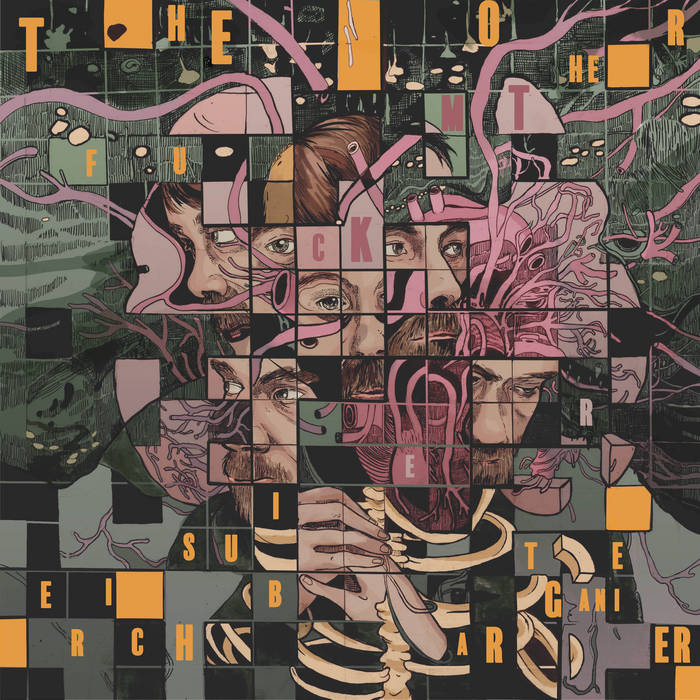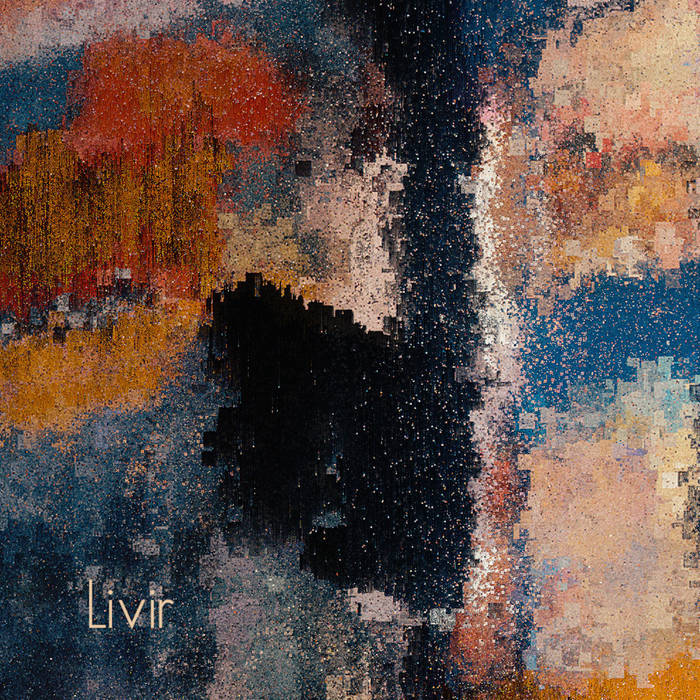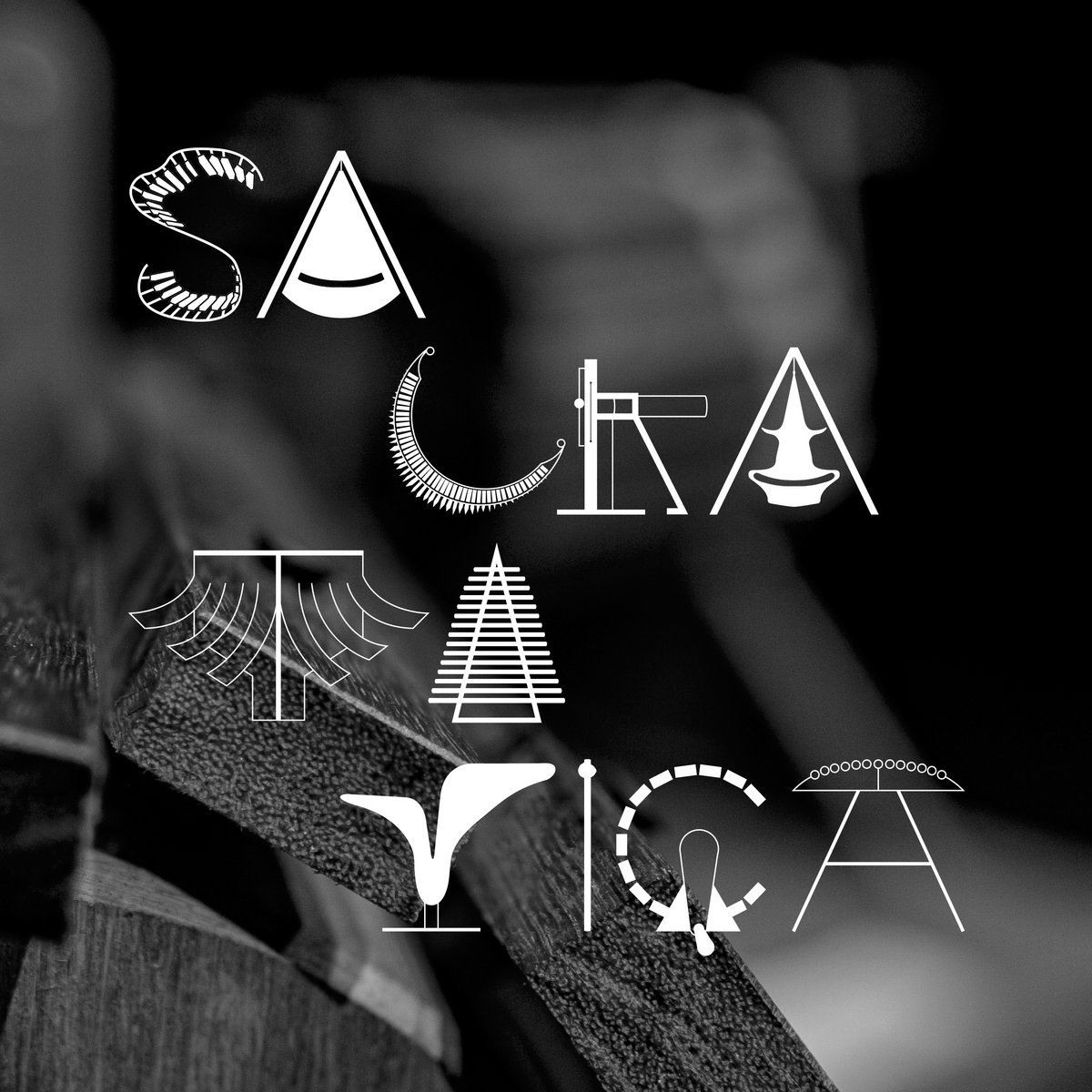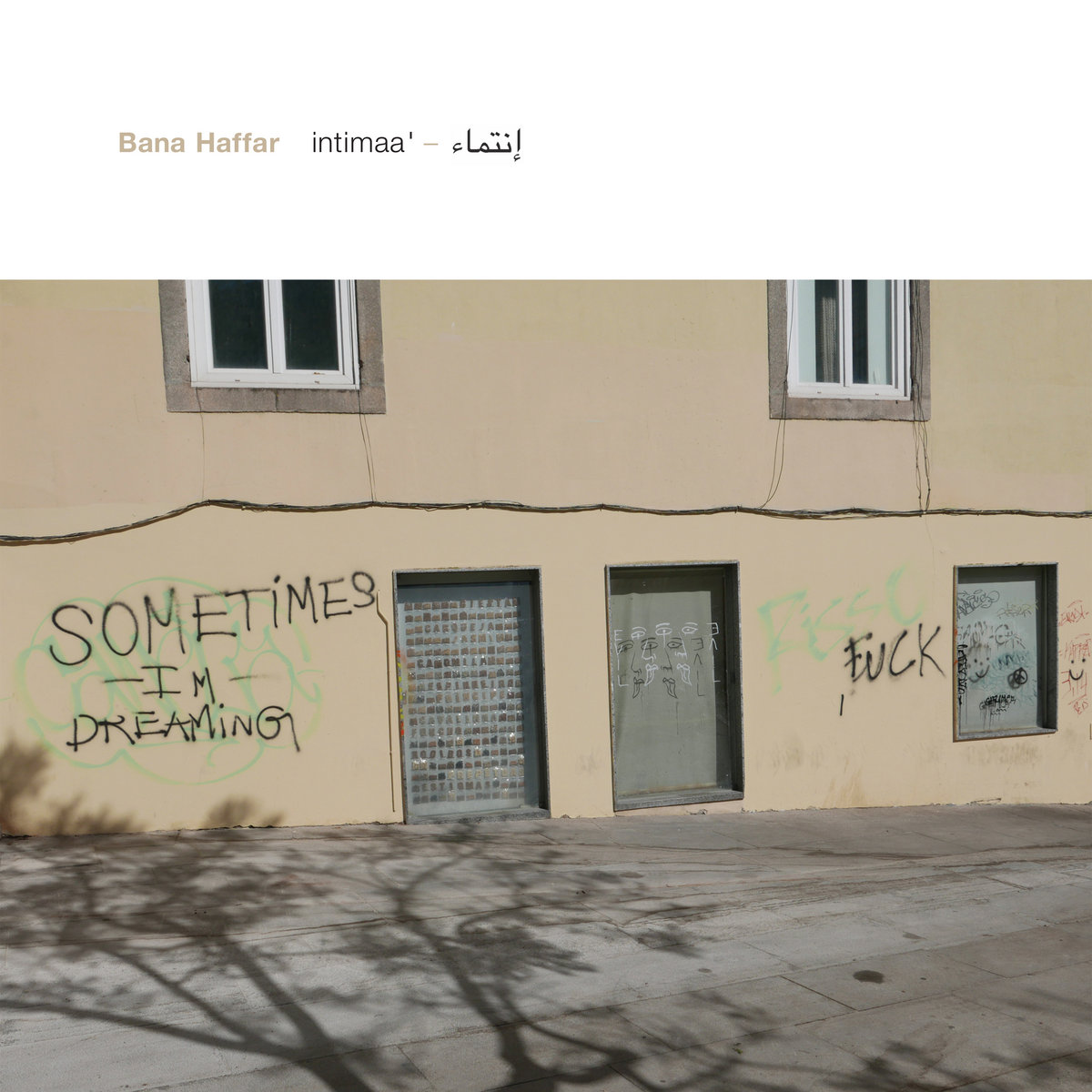Bandcamp Friday is back once again! Today, Bandcamp is waiving its share of all sales in order to send profits directly to the artists and labels whose music you buy. So regardless what kind of music you're into—dungeon synth, freak folk, historically informed performance, harsh noise, whatever—go to Bandcamp today to help out independent labels and musicians.
If you need a starting point for your sonic journey, here's a taste of what's been vibrating our personal eardrums.
Erich Barganier: Geisslerlieder
Whenever "guitar music" comes to mind, you might think of shredding lead guitarists playing over-the-top, multi-minute-long solos in the context of rock or metal music. And with such solos, there are associations with self-indulgence, masculinity, and the general image of what a "rock star" and "lead guitarist" should look like. This was a driving force in popular music for decades, and as Newton said in his Third Law of Motion: "for every force, there is an equal and opposite reaction." One such reaction is this new album from Erich Barganier: Geisslerlieder.

Geisslerlieder flips the notion of the guitar solo on its head. Gone are any notions of technical virtuosity, soaring melodies, or meticulously crafted and polished solos, instead replaced by an array of acoustic and electronic dissonances in pitch, timbre, and rhythm. The results sometimes resemble what an electric guitar should sound like, but more often than not the smattering of hisses, gurgles, drones, and otherwise transformed sounds of a guitar have little to do with their source instrument.
In efforts to eschew any connotations with traditional electric guitar solos, Barganier employed a number of techniques (or anti-techniques, spending on your perspective) in composition, performance, and digital processing to create Geisslerlieder. For example, many flubbed takes, erroneous noises, and general mistakes that would be edited out of most recordings are here as assembled collages of sound. Prepared guitar techniques and the usage of non-plectrum objects to strike the strings also afford timbres outside of typical guitar sounds more akin to other stringed instruments. And as mentioned in the liner notes on Bandcamp, post-processing techniques ranging from detuning to the inclusion of SuperCollider code offer further transformations to the sounds of the guitar.
"Prelude" opens the album and leaves no uncertainties as to the sort of music that will follow: purposefully brash and offensive guitar blunders that normally have no business appearing on a published music release. Another track ironically titled "Chorale" features a number of simultaneous guitar layers, but often with no sense of unified timing or pleasing harmonic relationship with one another. This intentionally serves as a strong contrast to the very harmonious and structured form of traditional European chorales, another indirect inspiration for this record. My personal favorite track is "Allemande," beginning with sustained, feedback drones punctuated by noisy clicks and pops before degrading into a spread of remarkably un-guitar-like metallic bonks and blips bit-crushed and ring-modulated beyond recognition.
For the guitarist or instrumentalist seeking inspiration to venture outside the box of "palatable" music into more forward and adventurous territories, Barganier's Geisslerlieder is a masterful demonstration of how to challenge the conventions of popular, established musical norms.
Link: Check out Geisslerlieder on Bandcamp!
Livir: Restons Caché.es
At the other end of the guitar music spectrum within this month's Bandcamp Friday picks, Restons Caché.es by French duo Livir merges gentle, textural guitar playing with electronic layers, and synthesized instrumentation. Clearly a record where much thought and care was placed into curating a sonic aesthetic, Restons Caché.es achieves the delicate balance of embarking upon a sonic journey while maintaining cohesion and relation between its five tracks. No track feels out of place—all work together to serve the bigger picture of the entire release.

In the opening track "N'oublie pas que je t'aime," gentle guitar arpeggios are at first supplemented by only delicate and intentional bits of effects processing, before the introduction of synths and other layers by the end. A sort of ambient inclination is introduced here, which certainly informs the sonic aesthetic of tones and timbres heard throughout Restons Caché.es. However subsequent tracks deviate through the inclusion of percussive rhythms, cutting synth tones, and crisp choice of found sound samples. In fact, much of the pleasure found in listening to Restons Caché.es comes from the compositional and instrumental contrast between different sections of each song.
The second track, "Mai," establishes the true back and forth nature between the guitar and electronic layers. Indeed, the title track shows both guitar and synth layers taking a more textural role throughout the first minute and a half of the song, before giving way to a driving beat with growling synth bass. Perhaps the most bold track of all, "Fleurs Pt. 2" features a duality between gentler layers of guitar and textures with piercing samples integrated into the heavy-hitting beat. Indeed, what began as a record seemingly led by the guitar playing ends with the electronics taking the spotlight, filled with multiple tracks of instrumental back and forth placed in between.
If you're wondering how to incorporate your instrument into an electronic sound palette either as a soloist or through collaboration, we recommend listening to Restons Caché.es. And keep a tab on Livir's future releases, as we're sure more inspiring works will come down the road.
Link: Check out Restons Caché.es on Bandcamp!
Joaquín Orellana: Sacratávica
It's not often that I stumble upon a truly original work from an early electronic music composer that I haven't heard of before. The history of electronic music, though relatively short, is rather complex and multifarious. In fact, as we are currently learning, it's more useful to view it not as a single history of electronic music, but as multiple histories that often overlap and inform one another without necessarily converging. The captivating work of Guatemalan composer Joaquín Orellana embodies this concept quite clearly.
Born in 1933, Orellana developed a unique approach to expressing his musical ideas, heavily influenced by both folklore and modern developments in composition and sound. Moreover, Orellana belongs to a rare breed of composers who design and build their own unique musical instruments to realize their visions. For those of us who are electronic music history enthusiasts, the story of why he began to build his own instruments is particularly fascinating. In 1967, the composer traveled to Buenos Aires, Argentina, for a one-year residency at the Latin American Center for Higher Musical Studies of the Di Tella Institute. There, one of the key features that attracted Orellana's attention was the electronic music studio, prompting him to experiment and work with the medium. Upon his return to Guatemala one year later, Orellana realized that he still needed those electronic sounds in his compositions and began designing acoustic instruments that could replicate the desired sonic character. Highly sculptural, the majority of the instruments that Orellana created are based on disassembled wooden bars from the Guatemalan national instrument, the marimba grande, but he also crafted instruments out of metal and other materials. Notably, the peculiar shapes of these instruments are not random, but directly informed by the gestures that the composer envisioned. Furthermore, these shapes help to bring forth that sonic quality we typically associate with electronic music. Some of Orellana's instrument designs sound remarkably mechanical and electronic, while others evoke natural phenomena like rain, wind, or thunder.

While the instruments and the music produced by the composer demand attention in their own right, Joaquín Orellana's works possess another, distinct dimension. Steeped in Guatemala's culture, Orellana's compositions frequently spotlight two elements: mysticism and the political history of his own country. Specifically, the composer's work underscores the violence committed against indigenous tribes during the prolonged civil war in the region.
Sacratávica was released in the Spring of 2023 by Identidata, a young Guatemalan label dedicated to the country's adventurous music. It features four of the composer's compositions, written between the 1970s and 2010s, and recorded in 2016. Significantly, this is the first release that presents the composer's work in a high-quality recording format. True to the composer's style, the compositions feature elements of poetry and tape manipulation, aleatoric techniques, as well as flutes and choirs. Like the shapes of some of the Orellana's instruments, the compositions collectively form a sonic roller-coaster that fluctuates between moments of quiet harmony, haunting timeless textures, intricate rhythmic structures, and discordant intensity. The music exposes the conflict and inevitability of the encounter between tradition and modernity, known and unknown.
Sacratávica is a rare gem that stands as a testament to Orellana's ingenuity and distinct musical vision. His innovative use of custom-built instruments, coupled with his ability to weave in elements of Guatemala's rich culture and troubled history, makes this album an essential listening experience. From the intricately crafted melodies to the stirring narratives embedded within each composition, Orellana takes us on a sonic journey that both challenges and enlightens, all the while pushing the boundaries of what we understand as electronic music. As a culmination of decades of experimental sound exploration, Sacratávica undoubtedly serves as a significant contribution to the histories of electronic music.
Link: Check out Sacratávica on Bandcamp!
The Dura Hotel: Room Service
Sometimes you encounter a piece so raw and intense that you can't help but be intrigued—and the Dura Hotel's Room Service is certainly one such piece.

According to their Bandcamp page, the Dura Hotel is "an international abnormal music collective comprised of 100 members." Room Service is something like a collaborative compilation of material from dozens of contributors—with individual tracks combining audio from multiple artists, sometimes in quite cohesive, and sometimes in much more collage-like fashion. While this type of work can sometimes come across as unfocused or disjunct, the Dura Hotel uses this disjunct-ness as a core part of the piece's overarching concept.
Room Service is a guided listening experience that leads you through the various corners of a fictional hotel in the Swiss alps. The liner notes imply a thematic connection to dreams/nightmares—the individual track names reference magic, corn devils, itinerant preachers, boiler rooms, and the loss of gravity...a surreal set of concepts that aptly reflect the sometimes-eerie, often-downright-terrifying nature of the sounds themselves.
In Room Service, you'll find extreme bitcrushing, lo-fi screeches and howls, manipulated non-human voice complaining about broken radios, resonant squeals, and a constant churn of shuddering high-pitched noise. It features sonic aesthetics not dissimilar to harsh noise and hyperpop, with extended interjections of lo-fi loops and ambience. This is a constant show of how engaging and visceral the "bedroom production" aesthetic can be when pushed to its most aggressive extremes—but it also makes room for more spacious listening between blasts of sheer terror.
Bonus: the fifteenth track of the digital album is a no-breaks, all-in-one version of the full work—I'd recommend jumping straight to this for an uninterrupted, seamless listening experience.
Link: Check out Room Service on Bandcamp!
Bana Haffar: intimaa' إنتماء
If you're hanging out on Perfect Circuit's blog (which...you are), it seems reasonable to assume that you're familiar with Bana Haffar. Haffar is a staple figure in modular synth culture, in no small part due to the fact that she is one of the co-founders of Modular on the Spot—an LA-based periodic synth picnic/concert/happening that has since taken on new life in other cities and countries.

Despite this connection to a now-nearly-ubiquitous aspect of "modular synth culture," Haffar is actually, in our estimation, quite unlike many modular synth artists. While the modular synthesizer is a primary tool in her creative process, her inspiration doesn't necessarily stem from the instrument itself: instead, extramusical concepts inform the processes she uses to create music. As a result, her music feels like it transcends the all-too-common pitfalls of music made with modular synthesizers. It's much more than the "I just got a new module, here's my album" approach—her music is patient, thoughtful, and controlled by an underlying process that, despite many unexpected and occasionally disjunct results, feels cohesive.
In interviews, Haffar has pointed to the art of weaving as a primary inspiration and turning point in the development of her own musical processes. In 2019, when living in Asheville, North Carolina, she was commissioned by the Black Mountain College Museum + Arts Center to create a piece for percussion quartet. Ultimately, she took inspiration from Anni Albers—a textile artist and printmaker who taught weaving at Black Mountain College. By studying Albers and the process of weaving itself, Haffar was able to devise a means by which weaving drafts—grid-like two-dimensional templates for weaving—could be translated into rhythmic structures. By deepening her personal understanding of weaving, Haffar was able to develop a sense of relationship between the patterned structures of everyday objects and the music she was creating...and weaving is still a central concept in her music-making.
Her latest full-length release intimaa' إنتماء (released on Touch) follows along this trajectory. "Intimaa'", or "belonging" in Arabic, serves as a central theme for the music. Haffar's sonic tapestries have an evocative, gradually-evolving, searching quality—constantly changing, never settling. Dissimilar materials overlap one another; sounds rhythmically collide and stretch beyond one another's boundaries; peaceful ambiences dissolve into effervescent textures while rhythms stumble past one another.
Powerful work from one of the most thoughtful living modular synth composers, intimaa' إنتماء is a series of spaces that invite contemplation. Perhaps Haffar's most meditative and engrossing work to date, this is deeply introspective music—turn it on if you want to get lost in thought and guided gently to some not-so-certain destinations.








